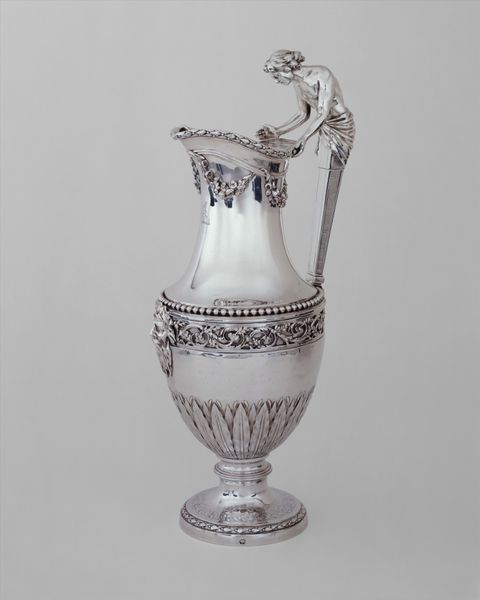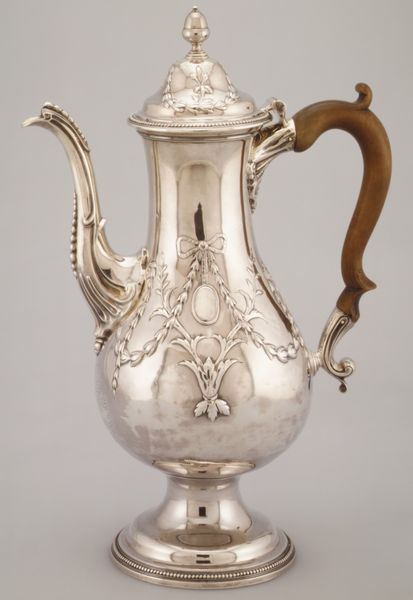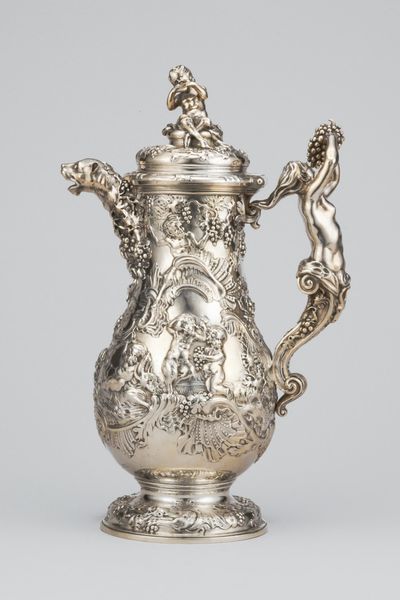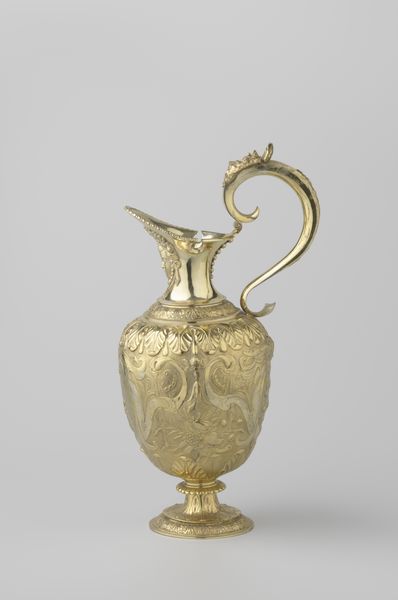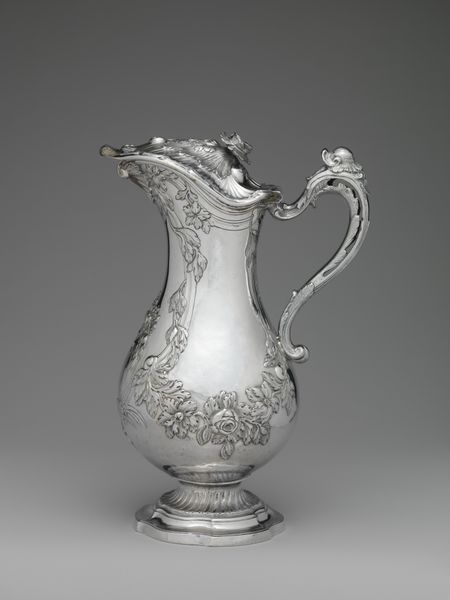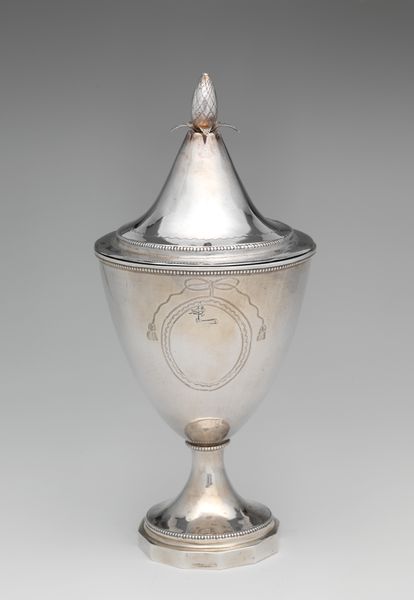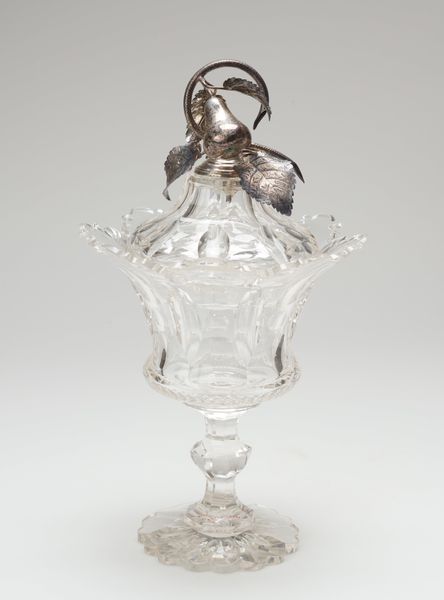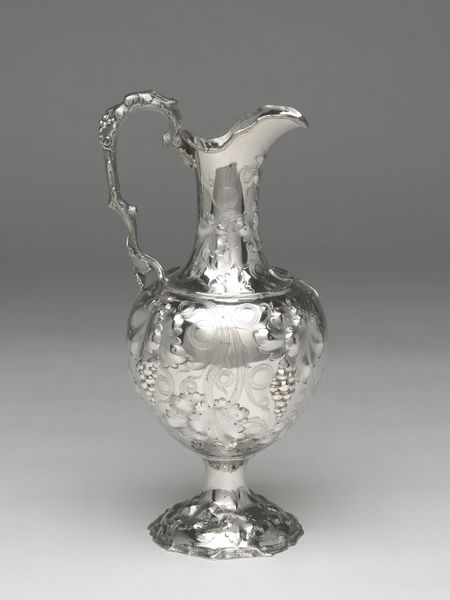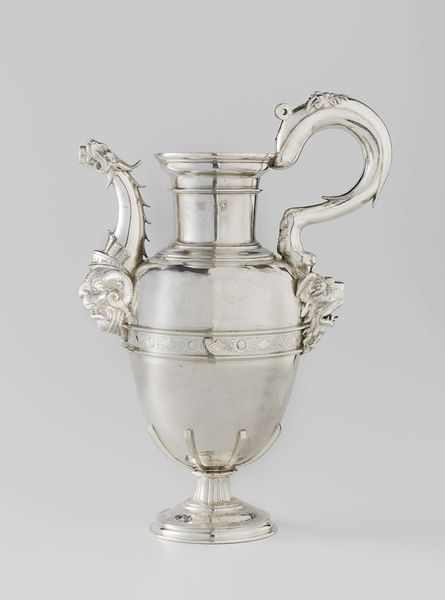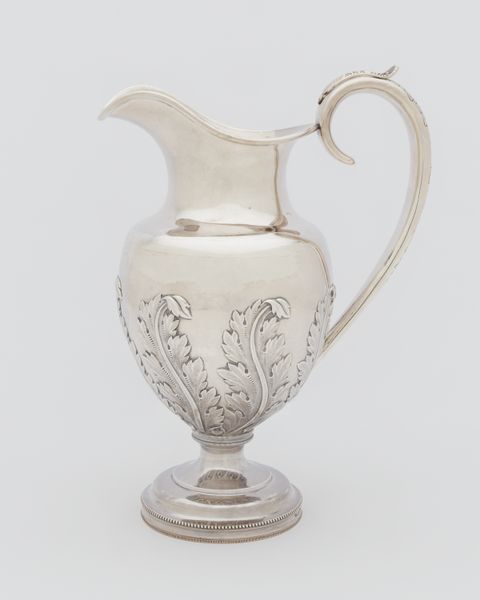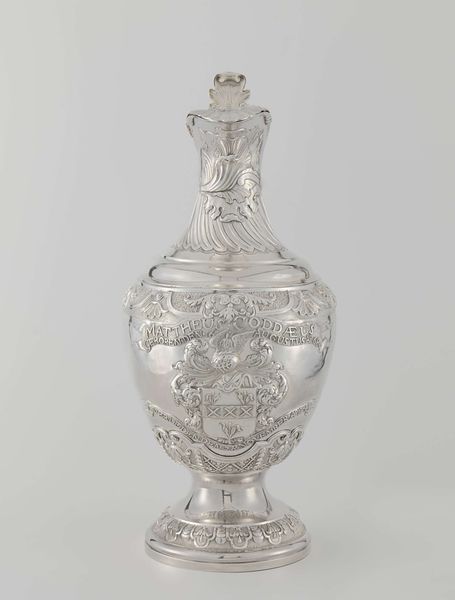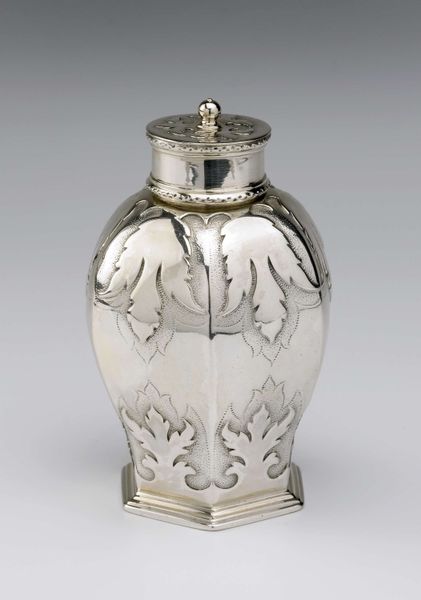
silver, metal, sculpture
#
silver
#
baroque
#
metal
#
11_renaissance
#
sculpture
#
decorative-art
Dimensions: height 30.8 cm, width 13.5 cm, diameter 11.5 cm, weight 748 gr
Copyright: Rijks Museum: Open Domain
Editor: Here we have a stunning Ewer and Basin with the arms of Vlissingen, crafted in silver in 1608 by Jacques Bogaert. The level of detail is incredible! What strikes me is the ornamentation. How would you interpret this piece? Curator: Focusing on the materiality of this piece really unlocks its historical significance. Silver wasn't simply a precious metal; it was a direct embodiment of wealth, power, and even geopolitical strategy in the 17th century. Think about the process: mining, refining, the skilled labor of the silversmith. Editor: Right, I can imagine the huge amount of labor and artistry that went into shaping this piece. What do you make of the figures incorporated into it? Curator: These are not mere decorations, but assertions of authority, statements of cultural identity by the town of Vlissingen. Ask yourself where the silver originated. Who controlled the mines? Whose labor produced the raw material? It becomes less about 'art' and more about the flows of capital and power during this time period. How does understanding this change the way you see it? Editor: It definitely complicates things! It's easy to get caught up in the beauty and miss the economic and potentially exploitative realities embedded in the object itself. Now I wonder who owned it, how it was used, and even the silversmith's working conditions! Curator: Exactly. This ewer and basin goes beyond pure aesthetics. It allows us to examine the networks of trade, labour, and consumption that shaped the early modern world. Appreciating this artwork means grappling with its complex material history. Editor: It's almost like a beautiful artifact concealing a story of labor, global resources, and economic status! It is not just decoration. I appreciate learning about the extended effort required to produce these objects. Curator: It underscores the value that is both easily seen, and that remains hidden to this day.
Comments
rijksmuseum about 2 years ago
⋮
Servants would go around with ewers and basins at the beginning and end of formal dinners. Water was poured from the ewer over the hands of the distinguished guests, and the dirty water was caught in the basin. This ewer and basin were the property of Vlissingen. The city’s coat of arms – a crowned bottle – and its motto are engraved in the centre of the basin.
Join the conversation
Join millions of artists and users on Artera today and experience the ultimate creative platform.
